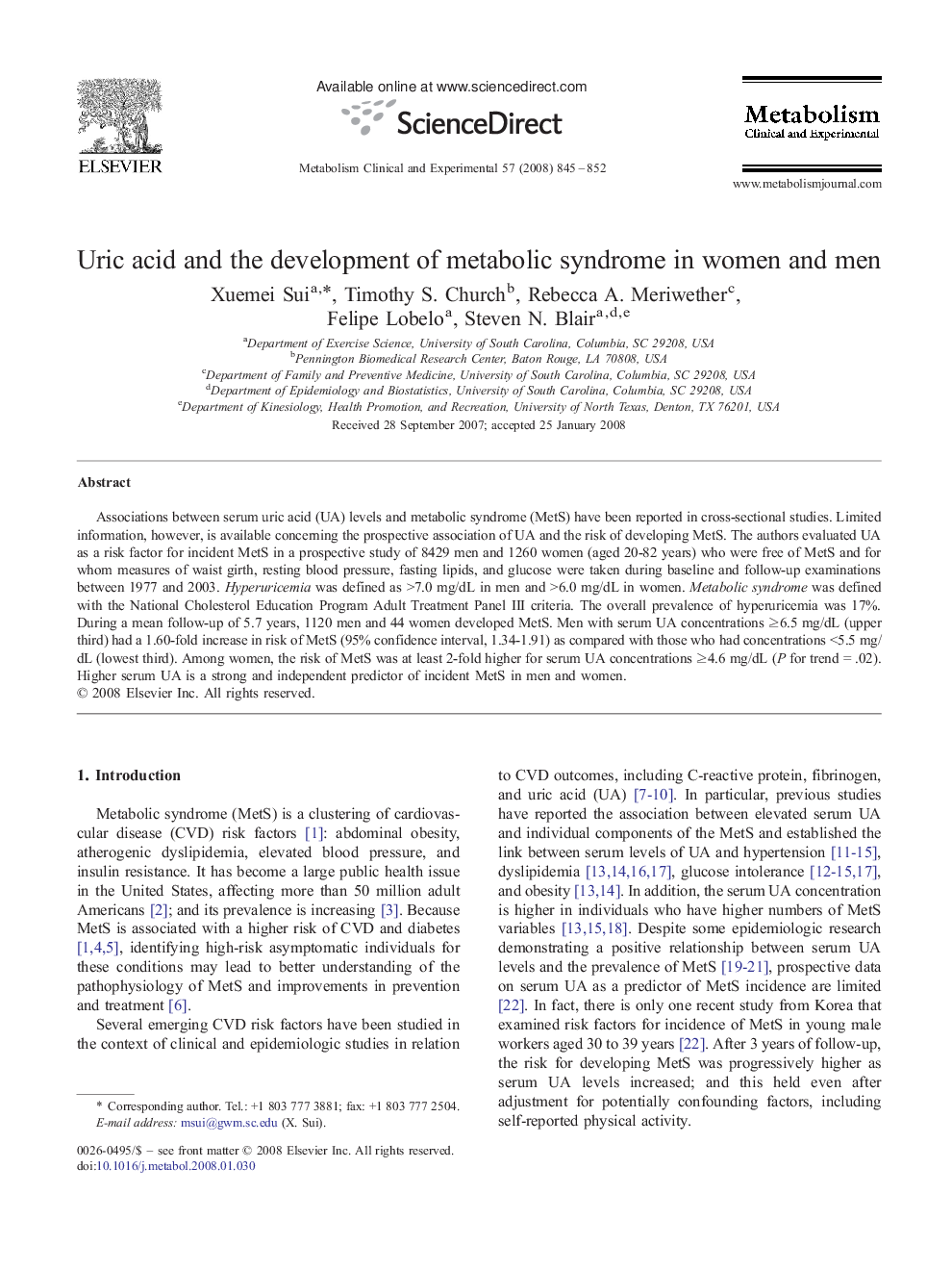| Article ID | Journal | Published Year | Pages | File Type |
|---|---|---|---|---|
| 2806273 | Metabolism | 2008 | 8 Pages |
Associations between serum uric acid (UA) levels and metabolic syndrome (MetS) have been reported in cross-sectional studies. Limited information, however, is available concerning the prospective association of UA and the risk of developing MetS. The authors evaluated UA as a risk factor for incident MetS in a prospective study of 8429 men and 1260 women (aged 20-82 years) who were free of MetS and for whom measures of waist girth, resting blood pressure, fasting lipids, and glucose were taken during baseline and follow-up examinations between 1977 and 2003. Hyperuricemia was defined as >7.0 mg/dL in men and >6.0 mg/dL in women. Metabolic syndrome was defined with the National Cholesterol Education Program Adult Treatment Panel III criteria. The overall prevalence of hyperuricemia was 17%. During a mean follow-up of 5.7 years, 1120 men and 44 women developed MetS. Men with serum UA concentrations ≥6.5 mg/dL (upper third) had a 1.60-fold increase in risk of MetS (95% confidence interval, 1.34-1.91) as compared with those who had concentrations <5.5 mg/dL (lowest third). Among women, the risk of MetS was at least 2-fold higher for serum UA concentrations ≥4.6 mg/dL (P for trend = .02). Higher serum UA is a strong and independent predictor of incident MetS in men and women.
